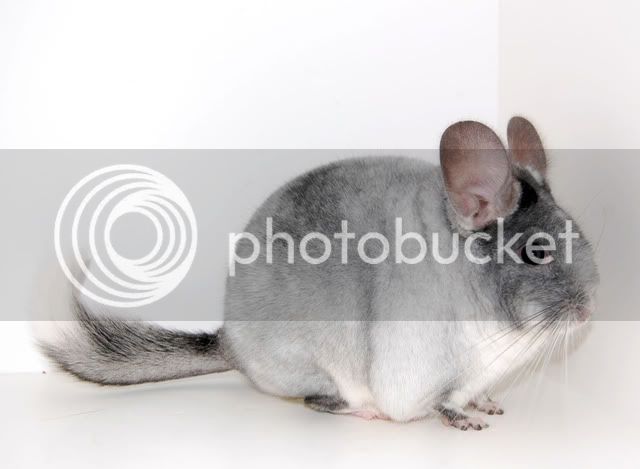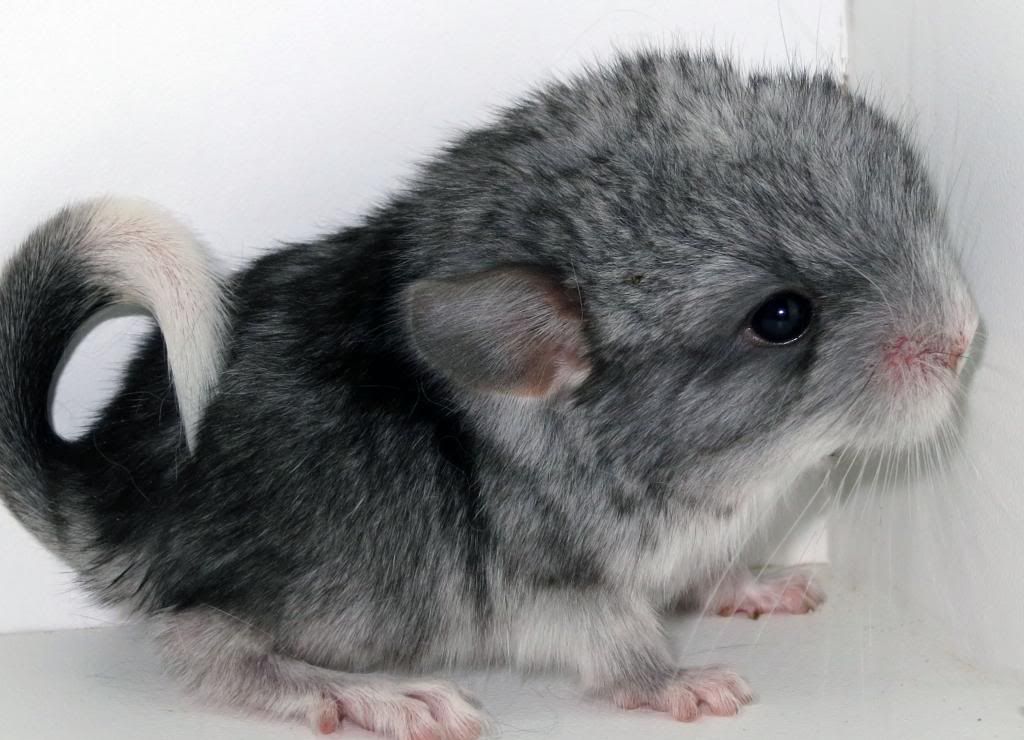I think what Kyle is theorizing is that white is the absence of color, so the mutation placed with it would create the coloring itself.
I was confused by Pookin's question.

Kyle posted at the same time I was composing. My bad for not quoting there.
I believe the strain of white determines how much shows through. In my experience the darkness of the standard, beige, ebony, violet, etc has not made a difference. When my most extremely marked line does throw a standard the offspring have little or no veiling. Doesn't matter what they are crossed into, there is a higher prevalence of unique markings.
Ronda had a male that threw pure white babies with everything. It didn't matter how light, dark, Tov or ebony the female was every white baby came out white. I think on the longevity thread I'd figured he had 47 babies in his lifetime.
I have two of his pure white daughters, going to do some experimenting with them myself.
I like to think chinchilla white acts more like white on horses, they all come out spotted one way or another and certain lines like a medicine hat will throw that pattern more often than not. If you breed a line long enough you do notice that they throw patterns.
white is the absence of color, so the mutation placed with it would create the coloring itself.
This is actually how Sapphire appears to work. If you have access to a microscope and a sapphire check out the fur. A real pale blue sapphire is clear like a white. If it is carrying another color the fur is clear but there are pigment leakage blobs all over. I've also noticed the darker the standard used the more leakage blobs you get, and the less blue the sapphire. Get sapphire on a dominant color Beige/Violet/whatever and it looks like some crazed psychopath was laying railroad tracks. (Regular standard fur looks like railroad tracks).
I have a sapphire in breeding with one of those pure whites. I want to see if those color leakage blobs are from sapphire existing as a broken down structure or if that pigment leaking through is what causes the odd shapes. I know, weird stuff going down in this barn.







